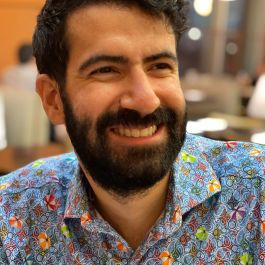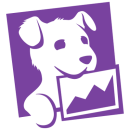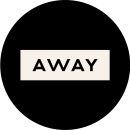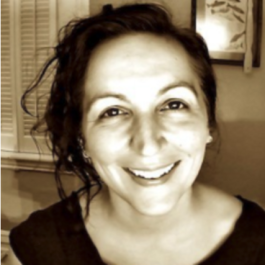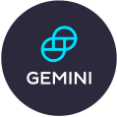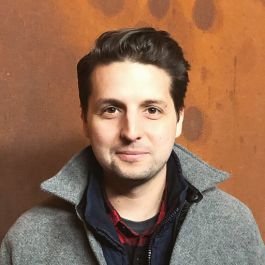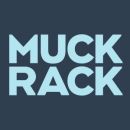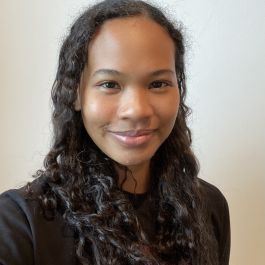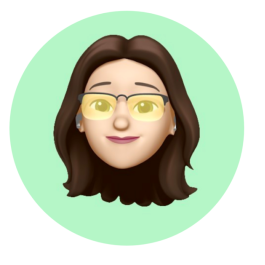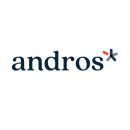Engineering teams throughout New York City are starting September strong with hiring waves. And they are keeping the momentum going in a truly collaborative fashion. For example, developers at local luggage and travel company Away are sharing the sense of “back to school” enthusiasm they feel beyond team meetings.
“Our projects impact one another, and it’s important for us to be aligned,” said Emily Eng, senior engineering manager.
For Eng, keeping an eye on the bigger picture is helpful in strategizing scale. In addition, the holistic collaboration helps her team “feel the larger impact and ripple effects of our work outside of the engineering realm.”
With so much growth on the horizon, it is important to recognize that evolution doesn’t have to come at the expense of retention.
To learn more about the latest NYC tech developments, we met with eight local leaders who shared their tech stack, projects they’re working on, and what makes their engineering team unique. If you’re looking for a new role on a growing team, they want to meet you.
As one of the earliest members of Devron’s engineering team, Singh had the unique opportunity to contribute to its processes’ creation and development.
Their tech stack: “Our platform is an integration of multiple microservices currently being hosted on AWS,” Singh said. “We leverage many AWS services and open source technologies to create a privacy-preserving machine learning environment. Much of my work is currently centered around building these microservices and creating reliable and efficient hosting and accessibility through AWS Lambda and API Gateway.”
All about ownership: “I’ve spent the majority of my time at Devron building our core platform. It has been a great and scrappy experience — what started as bare bones has grown into a fully deployed service. That’s my favorite part of working at Devron and in back-end development. I’ve learned a lot, and I continue to be challenged daily. I have a lot of ownership, which pushes me to grow as an engineer.”
Ongoing growth: “When I first came to Devron, the engineering organization was very new. This gave me an opportunity to contribute, influence, and take part in the creation and ongoing growth of the development process with respect to production processes and organization management. Many of our engineers come from top research and machine learning backgrounds, which is both critical and unique to the privacy-preserving machine learning problems we are solving.”
At Datadog, the product is built for both customers and internal teams. By creating a UX feedback loop, engineers like Lernia have the opportunity to observe how a feature is used and tweak things early on.
Their tech stack: “Front end at Datadog is about two million lines of TypeScript, React and Less that we bundle as a single-page app with webpack,” Lernia said. “All teams meet up once a month to discuss changes across the stack. Everyone is welcome to make improvements. Two teams are fully dedicated to the front-end developer experience: front-end-platform and design-ops.”
“We call the design system DRUIDS (Datadog Reusable User Interface Design System). It comprises more than 150 components, covering layout, navigation, form elements, typography, and more. All engineers learn about the component system in their first week at Datadog.”
Datadog dashboards: “We’ve recently shipped the new generation of our Datadog dashboards. Dashboards are your go-to place when you need to make sure to check your systems are running properly. Creating a whole new version of them felt a bit like filming a sequel for a very successful movie — the bar was already so high.”
“Because performance and UX are a big deal for us, we invested a significant amount of time writing our own custom layout engine after determining that off-the-shelf, open-source libraries weren’t efficient enough for our complex use cases.”
Working within a successful feedback loop: “We’re building a product for customers as well as for ourselves. We can release new features to internal teams, observe how they use a feature and tweak things early on. Other teams send us feature requests a few times a week. I find this feedback loop very valuable — it makes you aware of the trends and what people need.”
The Away team recognizes the value of cross-departmental collaboration. And in Eng’s experience, this big-picture visibility helps to refine development strategy and fit projects into larger company goals.
Their tech stack: “Our front end is a React-based application written in TypeScript,” Eng said. “We use Next.js to enable server-side rendering and some performance optimizations, and we leverage Storybook to document and keep track of all of our UI components. Storybook has been a great tool for our technical and non-technical teams to reference our component library. On the back end, we have a Ruby on Rails application built on top of the Solidus e-commerce platform, which is responsible for providing all of our APIs to our front-end client as well as managing our e-commerce storefronts.”
Stop, collaborate and listen: “We are currently working on an exciting replatforming project, where we are migrating our entire front-end e-commerce experience out of our legacy monolithic application to a new dedicated web application. I’ve really enjoyed how collaborative this project has been across the engineering, product, UX, and e-commerce teams. It’s been fun for the engineering team to build using more modern technologies and frameworks. We will be able to provide a more consistent, performant shopping experience to our customers and experiment and iterate faster on the customer experience.”
Beyond team interaction: “I love how collaborative our engineering team is with the larger Away organization. I think this is fairly unique to Away — it is quite common that engineers are interacting with folks in departments outside of our direct digital partners. We often work closely with operations and logistics, creative, marketing, and brand. Our projects impact one another, and it’s important for us to be aligned. This teamwork also allows us to feel the larger impact and ripple effects of our work outside of the engineering realm.”
In Scott’s experience, growing with an entirely remote team at ChartHop has led to greater intentionality in communication, encouraging team members to build lasting relationships.
Their tech stack: “My team primarily works on a React/Typescript front end powered by a Kotlin and MongoDB back end,” Scott said. “On the front end, we’re using tools like Chromatic for visual regression testing and Storybook to build out individual features and compile our shared component library. I’ve found both of these tools to be really helpful for collaboration while enabling us to rapidly expand the UI codebase. I’m also really excited to be learning and utilizing Kotlin and MongoDB, especially coming from a predominantly Node.js and SQL background.”
Uncharted territory: “I’m really excited to be working on a project right now that will make our platform more widely accessible to new customers. It’s somewhat uncharted territory for us, so being involved in new feature development from ideation to execution is exciting, not to mention challenging! So far, I’ve enjoyed the opportunity to collaborate across teams and departments while diving into different parts of the codebase.”
A distributed team: “For the most part, we grew the engineering team at ChartHop entirely remotely. As a result, I think this is the most collaborative and supportive team I’ve ever worked with. Because we’re distributed across cities and timezones, and some of us have yet to meet in person, we tend to operate with a level of intentionality that I’ve found really rewarding. All of my colleagues are more than happy to lend a hand when someone asks for help, and we balance out heads-down dev time with plenty of opportunities to pair on larger projects or more complex problems. I think we’re all aware of the challenges of remote work, so we actively work toward making the team inclusive and supportive. It’s made a world of a difference in my day-to-day work.”
Safe spaces to express humility, honesty and transparency, alongside intentional trainings on diversity and inclusion, demonstrate Gemini’s commitment to a healthy company culture and employee engagement.
Their tech stack: “We use Terraform and Okta, and we have a few bespoke tools as well,” Hall said.
Reducing the potential for human error: “I’m particularly excited about aligning our security expectations for our cloud resource governance with our bare-metal system standards. On a more granular level, we’re also doing a lot of interesting work to automate our manual operations logs in the most secure way. Security reigns supreme at Gemini, so it flavors everything the infrastructure team touches. That’s why automating our manual operations is such a challenging step forward. Reducing the potential for human error is a fundamental part of ensuring reliability and trust with our users and clients.”
Quality DEI training: “I’ve floated in and out of tech since 2004 in a variety of industries, and at Gemini, our diversity and inclusion training is really exceptional. Management is aligned, and the positive effects on the organization are obvious. For example, the techops SRE team in particular is a really safe space to express humility and publicly ask the types of questions that make solutions stable and scalable. This makes Gemini stand out to me, and confirms the authenticity of the mission to build and maintain trust both internally and with users.”
Their tech stack: “Muck Rack is a multipage responsive web application built with Django, an open-source Python web framework. Other technologies we use include MySQL, Celery, Elasticsearch, Redis, Vue.js, Webpack and more.
Being a front-end engineer by trade it’s been fun to gradually integrate Vue.js throughout the Muck Rack application to bring more single-page application experiences to areas of the product that can benefit from it. The multi-page application architecture has worked well for us. It allows us to be flexible in our approach.”
From IC to people management: “At the beginning of 2021 I was offered the opportunity to move into engineering management after being an individual contributor for many years. The challenges that have been exciting for me since this transition have been building out hiring processes, hiring a small team of new engineers to mentor and manage, and thinking about how we can improve our UX practices.
With more engineering talent available we’ve been able to carve out space to work on more engineering initiatives alongside feature development, which has been very challenging but also very fun. As we continue to grow I am excited to help usher in new features and initiatives to help Muck Rack "cross the chasm" and become the market leader in media relations software.”
What’s unique about their engineering org: “Retention! Muck Rack has not wavered from its mission, and we are in it for the long haul. Company values are authentic and baked into the team culture — you can really feel it. I’ve been a part of the engineering team at Muck Rack since 2015 and I am not the only one who has stuck around for this long. Many faces that I met back in 2015 are still at Muck Rack today and its been really fun and rewarding to grow our careers and this business together.”
Irie and her team members are inspired by Spring Health’s mission to eliminate barriers to mental health. This unity around a common purpose keeps the team aligned and motivated.
Their tech stack: “Spring Health’s back end is mostly Ruby on Rails, but we have services written in GoLang and PHP (using the Laravel framework),” Irie said. “Our front end is React, Redux, TypeScript and Apollo/GraphQL, with Next.js for routing. The components library is showcased using Storybook, which makes it easier to collaborate on the team and with product designers. We also use Aptible, which is basically a HIPAA-compliant layer over AWS. Our mobile application is written in Flutter and Dart, which enables us to ship to both iOS and Android from a single codebase.”
“Looking forward, we are gearing up to move toward a more service-oriented architecture that will support our rapid growth, as well as grant us greater flexibility in our product experiences for our platform.”
Eliminating barriers to mental health care: “Our top core value here is that members come first; our second core value is that that we move fast to change lives. Our team has written code that has saved lives to enable faster intervention for members experiencing suicidal ideation with intent.”
A visible, collective impact: “It’s clear that everyone is deeply committed to our mission and to our members. Through metrics but also anecdotal callouts from various departments, we can see the collective impact of our work, and oftentimes it does involve helping someone in great need.”
“A lot of new engineers have joined during the pandemic, so many of us have never met in person. For several, it was the first time they worked remotely on a distributed team. We have leaned into both structured and unstructured ways to connect that range from lunch and learns, platform-specific syncs, full engineering team retros every six weeks, monthly question-and-answer with leadership, as well as games, chats, and paid team brunches.”
With deep intentionality behind its diversity, equity and inclusivity measures, andros is committed to supporting employees of all backgrounds and identities.
Their tech stack: “We have leaned hard into the practice of infrastructure-as-code,” Hannah said. “Our products are built on multiple platforms and tech stacks — Ruby on Linux in ECS and EKS and PostgreSQL on RDS, and ASP.NET on Windows in EC2 and SQL Server on RDS, for example — with multiple internal departments and external clients that require different levels of access to different tools and resources. Using Terraform and Ansible not only lets our small SRE team manage and maintain all of it from a single source, but makes it easier for us to expand our knowledge into different areas of the tech stack and the business.”
Making quality-of-life improvements: “A lot of our existing infrastructure was built up organically around our business and engineering needs as the company has grown and expanded over time. Our current major effort is coalescing all of that into a single repository of Terraform files and Ansible playbooks, built from the ground up to be modular and replicable across multiple regions, environments and accounts, with little to no duplication of code.”
“It’s been incredibly fun both to strengthen and expand upon the aforementioned holistic view of all of the moving parts of our business, and to find and take advantage of new opportunities to automate processes and make quality-of-life improvements throughout the company.”
A strong emphasis on diversity: “As a trans woman and having been out to the entire company from my first day, not once have I seen anyone be anything less than warm, welcoming and respectful to me or anyone else. We have active and growing women’s and LGBTQIA+ (and allies) employee resource groups, and a monthly book club that focuses on BIPOC authors. We place a strong emphasis on diversity in the candidates we interview, and we evaluate every candidate on whether or not they share our values and commitment to fostering a culture of diversity, equity and inclusion, on an equal basis with (rather than as an afterthought to) their technical skills and ability.”



